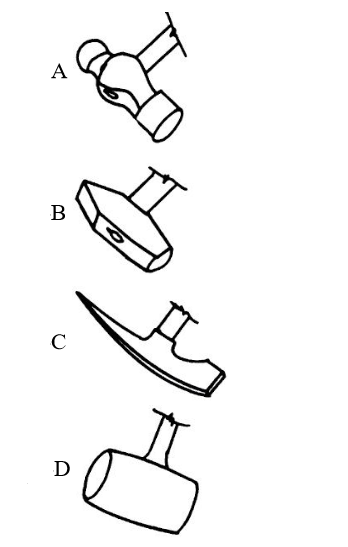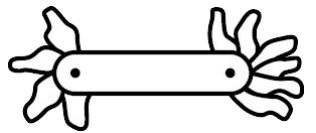PiCAT Auto & Shop Information Practice Test 2022: Try our free Prescreen Internet Computerized Adaptive Test (PiCAT) US Armed Forces Auto & Shop Information review questions and answers. You can also download the PiCAT Auto & Shop Information Practice Test in PDF.
This PiCAT Auto & Shop Information Practice Test 2022 has 22 questions about automobiles, shop practices, and the use of tools. Pick the best answer for each question.
PiCAT Auto & Shop Information Practice Test
Q1. Most automobile engines run according to the
- A. rotary cycle.
- B. intake-exhaust cycle.
- C. four-stroke cycle.
- D. two-stroke cycle.
Q2. When referring to engine configuration; an automobile with a V6 engine means
- A. the engine is connected to a 6-speed transmission.
- B. the engine has 6 valves.
- C. the engine operates on 6 volts.
- D. the engine has 6 cylinders arranged in a V configuration.
Q3. The function of the rotor is to
- A. open and close the distributor points.
- B. rotate the distributor cam.
- C. distribute electricity to the spark plugs.
- D. rotate the distributor shaft.
Q4. A governor is used on an automobile primarily to limit its
- A. rate of acceleration.
- B. maximum speed.
- C. fuel consumption.
- D. stopping distance.
Q5. Automobile headlights are ordinarily connected in
- A. parallel.
- B. series.
- C. diagonal.
- D. perpendicular.
Q6. A fuel injection system on an automobile engine eliminates the necessity for
- A. a manifold.
- B. a carburetor.
- C. spark plugs.
- D. a distributor.
Q7. A mechanic sets the proper electrode gap on a spark plug most accurately if he or she uses a
- A. dial gauge.
- B. round wire feeler gauge.
- C. square wire feeler gauge.
- D. conventional flat feeler gauge.
Q8. When reference is made to the “compression ratio” of an automotive gasoline engine, this is best described as the
- A. volume above the piston at top dead center.
- B. displacement volume as the piston moves down to bottom dead center.
- C. total volume of a cylinder divided by its clearance volume.
- D. displacement volume of a cylinder divided by its clearance volume.
Q9. Reverse flushing of a clogged gasoline engine block and radiator cooling system is done properly by
- A. not removing the thermostat from the engine block.
- B. connecting the flushing gun at the bottom of the engine block.
- C. using air and water.
- D. using low-pressure steam.
Q10. Ethylene glycol is put into the radiator of an automobile in cold weather because it
- A. lowers the boiling point of the mixture.
- B. lowers the freezing point of the mixture.
- C. raises the boiling point of the mixture.
- D. raises the freezing point of the mixture.
Q11. The purpose of the ignition coil in a gasoline engine is primarily to
- A. raise the current.
- B. raise the voltage.
- C. smooth the current.
- D. smooth the voltage.
Q12. The tool that is best suited for use with a wood chisel is

Q13. An expansion bolt is used to
- A. enlarge a hole.
- B. fasten into hollow tile.
- C. allow for expansion and contraction.
- D. fasten into solid masonry.
Q14. The length of a 10-penny nail, in inches, is
- A.
- B. 3
- C.
- D. 4
Q15. Glazier’s points are used to
- A. hold glass in a wooden window sash.
- B. scratch glass so that it can be broken to size.
- C. force putty into narrow spaces between glass and sash.
- D. remove broken glass from a pane.
Q16. A wood screw that can be tightened by a wrench is known as a
- A. lag screw.
- B. carriage screw.
- C. Phillips screw.
- D. monkey screw.
Q17. The reason that a lubricant prevents rubbing surfaces from becoming hot is that the oil
- A. is cold and cools off the rubbing metal surfaces.
- B. is sticky, preventing the surfaces from moving over each other too rapidly.
- C. forms a smooth layer between the two surfaces, preventing their coming into contact.
- D. makes the surfaces smooth so that they move easily over each other.
Q18. The tool below is used to
![]()
- A. set nails.
- B. drill holes in concrete.
- C. cut a brick accurately.
- D. centerpunch for holes.
Q19. Wood ladders should not be painted because
- A. paint will wear off rapidly due to the conditions under which ladders are used.
- B. ladders are slippery when painted.
- C. it is easier to store an unpainted ladder.
- D. paint will hide defects in the ladder.
Q20. The tool shown below is used to measure

- A. clearances.
- B. wire thickness.
- C. inside slots.
- D. screw pitch.
Q21. A lathe would normally be used in making which of the following items?
- A. A hockey stick
- B. A picture frame
- C. A bookcase
- D. A baseball bat
Q22. The term “whipping” when applied to rope means
- A. binding the ends with cord to prevent unraveling.
- B. coiling the rope in as tight a ball as possible.
- C. lubricating the strands with tallow.
- D. wetting the rope with water to cure it.
